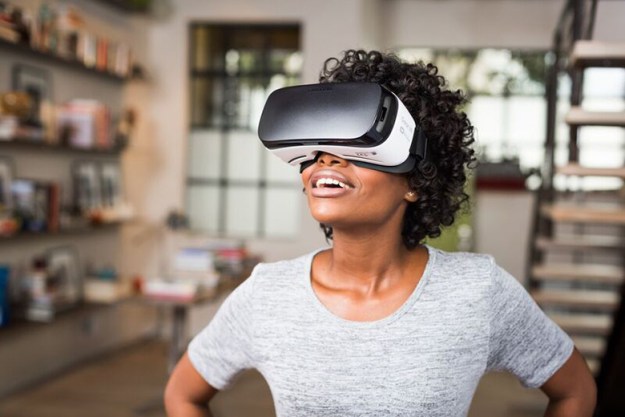Virtual reality can transport us to other places, with all the sights and sounds we might need to convince us that we’re in a different environment. When it comes to other senses, however, there remains a whole lot of work to be done. One thing that VR still doesn’t do well is replicate temperature sensations; making the coronavirus lockdown dream of a virtual vacation, complete with the warming sensation of the shine on your face, still a fantasy. Perhaps until now, that is.
Researchers from the University of Chicago have come up with a, frankly, mind-boggling way of delivering the sensation of temperature in virtual reality — and it’s all achieved by pumping odorless chemicals into your nose. Because our brains turn out to be wired very strangely.
“Humans have a handful of receptors for feeling temperature changes, and these cells are triggered by hot or cold temperatures of the skin or — and this is very important to us — by some specific chemicals,” Jas Brooks, a researcher on the project, told Digital Trends. “This is why when eating something with capsaicin, the main ingredient in peppers, [it] makes you feel hot.”
This chemical triggers a specific receptor, called TRPV1, which is also more commonly triggered by high temperatures. Similarly, menthol, aka the main ingredient in breath mints, triggers a cold receptor called TRPM8. Brooks said that, while this effect has been well-studied in certain disciplines, “to our knowledge, there is no prior research looking into computer-controlled delivery of these compounds for temperature feedback — especially for virtual reality.”
This is what the team’s wearable device does, allowing a VR simulation to precisely control when these sensations are activated by hacking your face (as painful as that might sound) through the release of odorless chemicals from a low-power attachment affixed to a VR display.
“Our key interest was in whether temperature sensations can be made mobile,” Brooks said. “Power efficiency is a key element of any virtual reality headset. In fact, the mainstream interest we see today in VR stems from untethered setups like the Oculus Quest. This is why all the new headsets are portable and do not require you to be connected via a cable to a computer or AC outlet as they did just two to three years ago. Ultimately, any kind of new modalities for VR/AR will only succeed if they are feasible in a mobile [and] untethered context.”
At present, the work is still very much a proof-of-concept. But if such a device was to be brought to market, it’s easy to imagine how it could be used for all kinds of VR demos — from gaming to educational tools to, yes, that VR vacation we mentioned up top.
Editors' Recommendations
- The best Meta Quest 2 games
- Apple is not ready to launch its AR/VR headset yet
- Apple’s VR headset could get these surprise iOS features
- The Meta Quest 2 VR headset is dominating Steam
- You won’t be taking Microsoft’s HoloLens 3 into the metaverse


